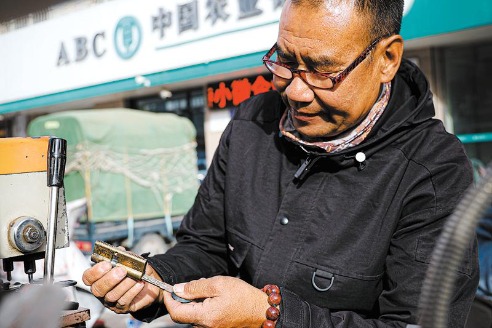Cities exploring ways to curb outdoor smoking

Advocates for a tobacco-free environment in urban streets and outdoor spaces may breathe a sigh of relief as a growing number of cities are now exploring effective ways to restrict outdoor smoking amid China's persistent push for tobacco control.
In mid-March, Shanghai kicked off a groundbreaking campaign to restrict outdoor smoking in eight of its busiest landmarks and tourist destinations, including the Bund, Wukang Road and the pedestrian zone of Nanjing Road.
The citywide initiative combines strict enforcement of existing smoke-free zone regulations with flexible governance tools — ranging from innovative public awareness events to volunteer patrols to dissuade smokers and the creation of designated smoking areas.
In tandem with the municipal efforts, Shanghai Disneyland Resort, a popular attraction for domestic and international visitors, also announced plans to reduce its smoking zones and expand tobacco-free areas.
This month, a "No Smoking More Health" event, featuring tobacco control exhibitions, games and sports, was held in Shenzhen, Guangdong province. According to its organizer, the publicity event was also a pep rally for the city's initiative to guarantee smoke-free sports events to be held during the 15th National Games later this year.
The two cities' efforts epitomize the latest developments of China toward its goal to build a healthier country with less nicotine. As outlined in the Healthy China Initiative, the nation aims to reduce the smoking rate among people age 15 and above to 20 percent and expand the coverage of anti-smoking statutes to 80 percent of its population by 2030.
Measures put in place
China's entanglement with tobacco dates back more than 400 years.
Tobacco was introduced to China from Southeast Asia sometime between the late 16th century and early 17th century during the Ming Dynasty (1368-1644). Since then, it gradually became embedded in Chinese social life.
Centuries later, smoking has evolved into a substantial public health threat. By the early 2000s, the number of smokers in China had reached 300 million, significantly contributing to the prevalence of cancer, cardiovascular disease and chronic respiratory illnesses.
To counter the dangers posed by tobacco, China ratified the World Health Organization Framework Convention on Tobacco Control in 2005, which took effect the following year.
Under the aegis of the convention, the country has since implemented a series of tobacco control measures, including a ban on tobacco advertisements, tobacco tax increases and local statutes prohibiting smoking in public venues.
Major cities such as Beijing, Shanghai and Shenzhen have led the charge, introducing regulations to enforce smoking bans in workplaces, public transportation and public spaces such as schools, hospitals and restaurants.
According to preliminary statistics, over the past two decades, 24 provincial-level regions and more than 250 cities have issued local smoking control regulations.
Thanks to the efforts, the national smoking rate declined from 28.1 percent in 2010 to 23.2 percent last year, indicating steady progress, statistics show.
At the local level, many cities have achieved the 2030 target ahead of schedule. Taking Beijing as an example, since the city implemented strict tobacco control measures a decade ago, its smoking rate among residents age 15 and older has declined by 4.2 percent to 19.2 percent.
Shanghai approach lauded
However, as China's anti-smoking drive further expands into workplaces, public transportation and venues, outdoor smoking has emerged as a pressing issue that has yet to be addressed.
For example, surveys in Shanghai show that although the adult smoking rate has dropped to 19.2 percent, 47.6 percent of residents are still exposed to secondhand smoke, especially in outdoor settings.
According to scientific researches, secondhand smoke contains more than 7,000 chemicals, including 69 known carcinogens, and is harmful even in minimal exposure.
Following the new measures taken by Shanghai to reduce outdoor smoking, netizens have engaged in heated discussions on social media. Many praised Shanghai's outdoor tobacco control efforts and urged similar measures to be implemented in more cities.
Shanghai's flexible, multi-stakeholder approach to smoking control also gained recognition from experts and professionals. You Tengfei, an associate professor at the East China University of Political Science and Law, said at a recent seminar that such a flexible governance model is reshaping the efforts to build healthy cities.
Noting the key hurdles such as inefficient law enforcement, economy versus health tension, and deep-rooted smoking culture, You said that a systematic solution to these issues will require improved legislation, innovative governance tools and increased public participation.
Xinhua





































